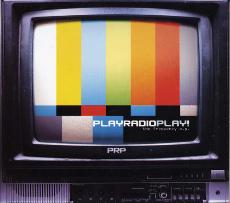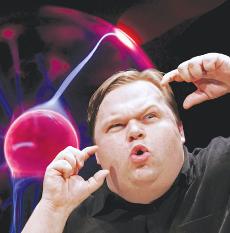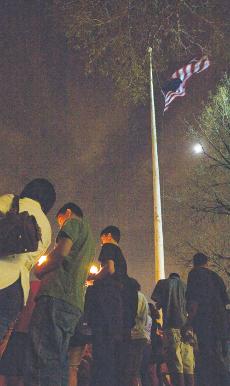Oasis of Stimulation
March 31, 2007
BY MICHAEL HOGAN
MIT Assistant Professor of theater Jay Scheib is no stranger to avant-garde art. In the early 90s, he directed a piece at the University of Minnesota that involved actors making their way onto the stage covered in trash and earth only to stand silent and motionless for 72 minutes. For 12 minutes the delighted audience applauded, and during the last 60, those who remained booed and heckled. The Institute of Contemporary Art in Boston, a new artistic marvel itself on the South Boston waterfront, recently presented the world premiere of Scheib’s new play This Place is a Desert.
Beginning as a workshop with the Kretakor Ensemble in Budapest, This Place is a Desert tells the story of four couples colliding together in an attempt to save themselves from the mundane complexities of life. There is break dancing, a game of dodge ball, a narrowly averted nuclear disaster and a “love scene” done almost exclusively in Italian. All of this is weaved around the story of one woman, Monica, who wants nothing more than to escape into the world that surrounds her, to become lost in the fabrics of existence.
What stands out about This Place is a Desert is its presentation. Taking a cue from the work of Italian director Michelangelo Antonioni, Scheib explores the voyeuristic, cinematic qualities of theater, and of life in general. Done both figuratively and literally at the same time, Scheib delves into this aspect of life flawlessly.
The set is shaped like a four room house, each room viewed in a different way. Although the audience can see directly into some rooms, other more mysterious views are seen throughout the production. In one room the action is reflected in mirrors, and in another sheer curtains obscure the movement. In a third room, the audience can only see through a window to the inside.
The whole time, camera operator Daniel Benitez follows the actors throughout the house with a handheld camera. The footage he shoots, along with footage from other cameras placed on the set, is shown on four large video screens. The world contained on the stage is a vast and complex one, where all of the idiosyncrasies of humanity have been condensed into four small rooms. There is love and hatred, fear, sorrow, denial and acceptance. There is angst and there is happiness-all of this in the span of a few hours.
With the assistance of media artist Leah Gelpe, who has collaborated on some 20 previous productions, Scheib conjures a life’s worth of tragedy and comedy, and relates them in the most fascinating way possible. We live in a place where all of pop culture is permeated with voyeuristic cinematic obsessions. Through our strange addictions to celebrity gossip and the overload of reality television programming, our society has become immersed in all lives other than our own. Scheib pounces on this idea and exploits it to the highest degree possible, creating a spectacle of both stage and screen.
This Place is a Desert played in a limited run at the ICA from March 22-25. Though Desert is gone, the ICA offers more performance opportunities all the time. Upcoming performances include Tod Machover and the Ying Quartet’s “…but not simpler…,” “Electronic Haiku: Calm as Custard” choreographed by Cathy Weis, and the Mark Morris Dance Group. The ICA is located at 100 Northern Ave. on the South Boston Waterfront. More information on these performances and everything else the ICA has to offer can be found at icaboston.org.





























































